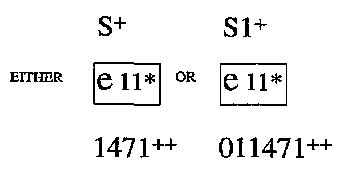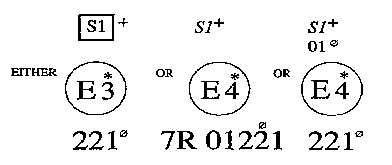S.I. No. 182/1991 - Road Traffic (Lighting of Vehicles) (Amendment) Regulations, 1991.
S.I. No. 182 of 1991. | ||
ROAD TRAFFIC (LIGHTING OF VEHICLES) (AMENDMENT) REGULATIONS, 1991. | ||
The Minister for the Environment in exercise of the powers conferred on him by sections 5 and 11 of the Road Traffic Act, 1961 (No. 24 of 1961), hereby makes the following Regulations. 1. (1) These Regulations may be cited as the Road Traffic (Lighting of Vehicles) (Amendment) Regulations, 1991. | ||
(2) The Road Traffic (Lighting of Vehicles) Regulations, 1963 to 1989 and these Regulations shall be construed as one and may be cited together as the Road Traffic (Lighting of Vehicles) Regulations, 1963 to 1991. | ||
(3) In these Regulations— | ||
"the Principal Regulations" means the Road Traffic (Lighting of Vehicles) Regulations, 1963 ( S.I. No. 189 of 1963 ); | ||
"the Agreement of 1958" means the United Nations Agreement Concerning the Adoption of Uniform Conditions of Approval and Reciprocal Recognition of Approval for Motor Vehicle Equipment and Parts done at Geneva on 20th March, 1958; | ||
"approved standard mark" means a mark set out in the Schedule to these Regulations; | ||
"Directive 76/758/EEC" means European Community Type Approval Directive 76/758/EEC dated 27th July, 1976; | ||
"ECE Regulation No. 7" means Regulation No. 7 Revision 1 as set out in the United Nations document of reference E/ECE/324 Add.6 dated 22nd May, 1967 and Annexed to the Agreement of 1958. 2. The following Article is hereby substituted for Article 45 of the Principal Regulations— | ||
Optional direction indicators and stop lamps | ||
"45.(1) Where a vehicle which is not required by these Regulations to be equipped with direction indicators is equipped with direction indicators, the indicators shall comply as far as practicable, having regard to the construction of the vehicle, with the requirements of article 18 of these Regulations and in particular they shall— | ||
( a ) be fitted in one or more pairs, one indicator of each pair (to indicate a change of direction to the left) being fitted to the left of the longitudinal axis of the vehicle which it is fitted and the other (to indicate a change of direction to the right) being fitted to the right of such axis, | ||
( b ) be fitted so that no part of their illuminated surfaces is less than 400 millimetres from the ground, | ||
( c ) be fitted at the same height and equidistant from the longitudinal axis of the vehicle, | ||
( d ) when in operation emit a flashing, diffused light, amber in colour, and | ||
( e ) be so constructed and fitted as not to mislead other traffic or persons controlling traffic. | ||
(2) Where a cycle or invalid carriage is equipped with a stop lamp or stop lamps, the lamp or lamps shall comply with the requirements of article 27 of these Regulations. | ||
(3) A mechanically propelled vehicle, may be equipped with a high mounted stop lamp, in addition to stop lamps required by these Regulations, provided that any such stop lamp fitted to a mechanically propelled vehicle first registered on or after 1st January 1993 shall comply as far as practicable, having regard to the construction of such vehicle, with the following requirements— | ||
( a ) the stop lamp shall be fitted with its centre on the vertical longitudinal centre line of the mechanically propelled vehicle; | ||
( b ) the stop lamp shall be fitted at a height on the mechanically propelled vehicle not more than 1500 millimetres from the ground and not higher than the roof of the mechanically propelled vehicle; | ||
( c ) the bottom edge of the stop lamp shall be higher than the top edge of stop lamps required by these Regulations; | ||
( d ) the stop lamp shall be actuated by the application of the service brake, and when so actuated, shall show a red light to the rear of the mechanically propelled vehicle; | ||
( e ) the stop lamp shall comply with the requirements of either Directive 76/758/EEC or of ECE Regulation No. 7 or any amendments thereto relating to stop lamps; | ||
( f ) the stop lamp shall be legibly and permanently marked with one of the approved standard marks set out in the Schedule to these Regulations; and | ||
( g ) no reflections from the light of the stop lamp on the rear window shall be visible to the driver when viewed indirectly in the rear view mirror or when viewed directly." 3. The following Schedule shall be added to the Principal Regulations after the Third Schedule thereto— | ||
"FOURTH SCHEDULE | ||
Article 45 | ||
APPROVED STANDARD MARKS FOR HIGH-MOUNTED STOPLIGHTS | ||
1. EEC STANDARD MARKS: | ||
| ||
2. ECE STANDARD MARKS: | ||
| ||
+ — the Mark 'S' or 'S1' above indicates that the approval was for a single rear-mounted stoplamp. | ||
+ + — this number is the number granted for EEC type approval of a stoplamp to Directive 76/758/EEC standard, or to any subsequent amended version of this Directive. | ||
* — this number varies and relates to the country which issued the approval. | ||
Ø — this number outside the circle, in either case above, indicates that approval was granted in conformity with the requirements, for approval of a stoplamp to ECE Regulation No. 7 standard, or to any subsequent amended version of this regulation." | ||
GIVEN under the Official Seal of the Minister for the Environment, | ||
this 8th day of July, 1991. | ||
PADRAIG FLYNN, | ||
Minister for the Environment. | ||
EXPLANATORY NOTE. | ||
The purpose of these Regulations is to permit the optional fitting and use of a centre high mounted stop lamp on a motor vehicle, in addition to mandatory lower level stop lamps. | ||
The Regulations also lay down technical requirements for the fitting of the additional stop lamp, which must comply with relevant EC or UN/ECE standards. The relevant EC standard is contained in Council Directive 76/758/EEC of 27th July, 1976 [OJ No. L 262 of 27.9.1976], which was adapted for technical progress by Council Directive 89/516/EEC of 1st August, 1989 [OJ No. L 265 of 12.9.1989]. | ||


